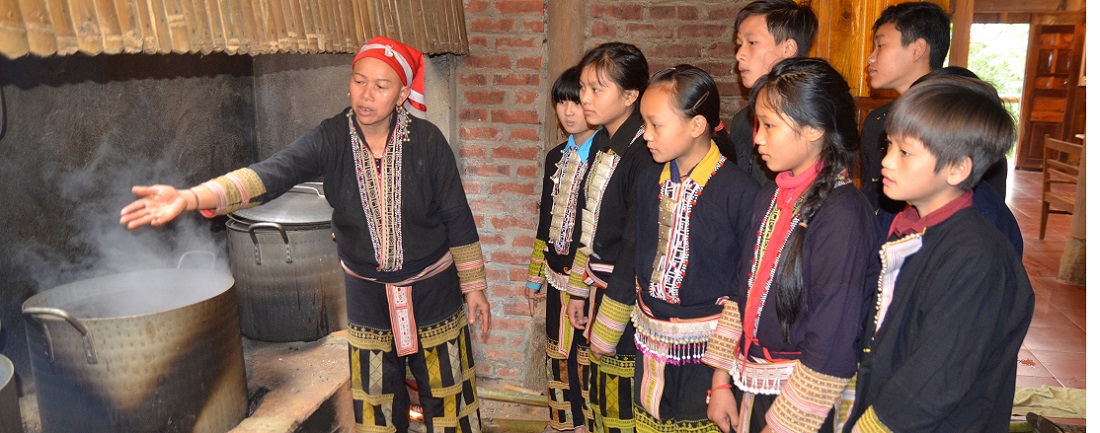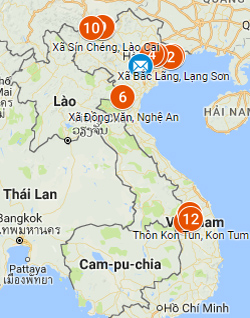News
Supervision of the implementation of policies and laws relating to forestland allocation to households and ethnic minority communities for the period 2006-2016
- The supervision of the implementation of policies and laws relating to forestland allocation to households and ethnic minority communities for the period 2006-2016 was implemented by five delegations established by the National Assembly's Ethnic Council. The supervising activities were carried out in the 9 provinces of Dak Nong, Gia Lai, Quang Nam, Quang Ngai, Nghe An, Hoa Binh, Dien Bien, Lai Chau, and Lao Cai, with the participation of members of the Ethnic Council, provincial deputies, Department of Ethnic Minorities, Ministry of Agriculture and Rural Development, Steering Committees of Central Highlands and North West, CIRUM and Central and local newspapers. The field supervision phase was conducted from August 14 and ends on September 9, 2017.
The supervision aims at three main issues: (1) Monitoring the issuance of legal documents to implement the Forest Protection and Development Law 2004; organization and implementation of policies and legislation on land and forest allocation to ethnic minority communities and households in mountainous areas for the period 2006-2016. (2) To evaluate achievements, shortcomings, difficulties and obstacles; to identify the causes and responsibilities of central and local state agencies in implementing the mentioned policy and law on land and forest allocation. (3) To propose solutions to improve policies and laws on land and forest allocation to ethnic minority communities and households in the mountainous areas in order to develop forests and improve the livelihoods of the ethnic minority people living in forests.
The legal basis for implementation of the monitoring activity is the Law on Forest Protection and Development 2004 and sub-law documents and the supervised local government reports. At the supervising sites, the delegations met with local authorities at all levels, visited the land use management models of people and communities, visited community spiritual forests, traditional forests, met and discussed with key farmers and village elders.
One common fact is that only two provinces of Nghe An and Lao Cai have access to land and forest allocation to communities and ethnic minority households according to the Law on Forest Protection and Development 2004 and other sub-law documents. The remaining provinces are almost unlikely to implement the mentioned law and still maintain the results of forestland allocation to communities and households in the period prior to 2006. Because of too little forestland allocation for the ethnic minority communities and households, the common consequences are: people face shortage of production and natural forest land, traditional forests are converted to plantations, resulting in unemployment, unstable livelihoods, land and forest disputes and constraints.
According to local opinions, the land allocation before 2006 contained many inadequacies and problems and the local authorities encountered many difficulties in implementing the policy on allocating land, contracting forest protection, implementing payment for forest environmental services, coordinating stakeholders involved in forest protection and management, fire prevention and control, as well as the development of livelihoods under forest canopy for local people. The main reasons provided by the localities is that the promulgation of laws and policies has not matched the investment resources for implementation, the coordination between the Agricultural and Financial sectors is not synchronized, local human and financial resources are limited, the awareness of land and forest allocation of ethnic minority communities and households is limited, the local infrastructure and income is not assured to support efficient forest management, protection and development, and effective models of forest management has not yet been multiplied.
Most of the provinces have offered contracting forest protection for communities, household groups and households mainly for the implementation of payments for forest environment services. Local reports refer to land allocation, but in essence, the results are apparently protection contracts. The reality in many areas is that, communities and households have not yet been identified as true forest owners in order to fully benefit from investment policies. The number of forest and forestland allocated to ethnic minority communities and households in pilot projects are still very small and financial resources are mainly supported by science and technology organizations, or domestic and international NGOs.
Thus, forest allocation to households and ethnic minority communities is still a major and urgent need that has not yet met the expectations of most ethnic minority communities. The above-mentioned shortcomings must be addressed, especially in the current context where the community and households are facing many obstacles by organizations and enterprises, which are managing large land and forest resources in localities.



































